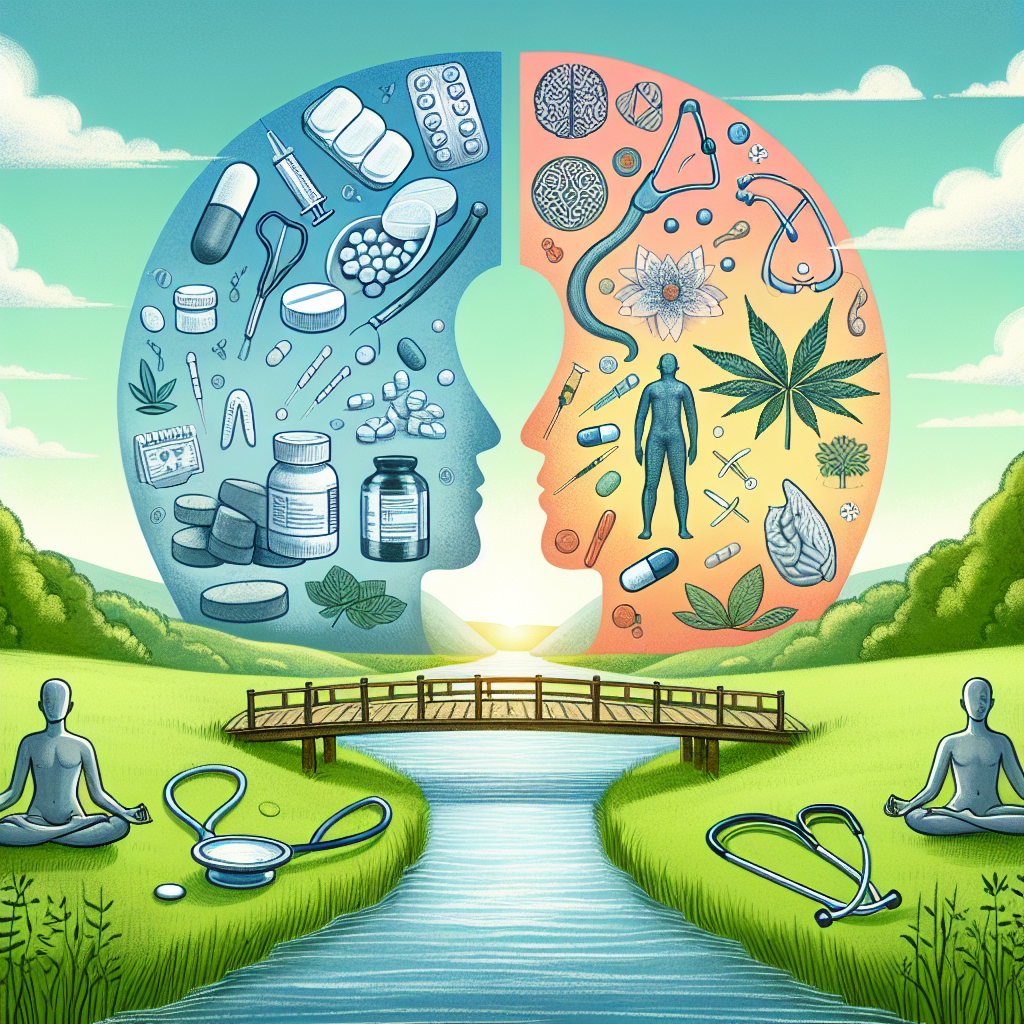Bridging Worlds: Integrative Approaches to Healing PTSD Through Western Medicine and Eastern Traditions
Post-Traumatic Stress Disorder (PTSD) is a complex mental health condition that arises after exposure to traumatic events. Affecting millions worldwide, it manifests through symptoms like flashbacks, nightmares, severe anxiety, and uncontrollable thoughts about the event. The journey to healing from PTSD can be arduous, and different cultures have developed various methods to address it. This article explores the integrative approaches to healing PTSD by comparing and contrasting Western medical approaches and Eastern traditional practices.
Western Medicine: Precision and Evidence-Based Treatment
Western medicine primarily focuses on evidence-based, scientifically researched methods. The mainstay treatments for PTSD in Western medicine include psychotherapy, pharmacotherapy, and, more recently, emerging technologies like virtual reality therapy and neurofeedback.
1. Psychotherapy:
Cognitive Behavioral Therapy (CBT) is a cornerstone in the treatment of PTSD within Western medicine, particularly a specialized form called Cognitive Processing Therapy (CPT). CPT helps patients reframe negative thinking related to trauma, thereby reducing distress. Eye Movement Desensitization and Reprocessing (EMDR) is another effective therapy, where guided eye movements help patients process and integrate traumatic memories.
2. Pharmacotherapy:
Medications such as selective serotonin reuptake inhibitors (SSRIs) like sertraline and paroxetine are FDA-approved for PTSD. These medications help manage symptoms by regulating neurotransmitters in the brain. Benzodiazepines and antipsychotics are also sometimes prescribed, though they are generally considered with caution due to potential side effects and dependency issues.
3. Emerging Technologies:
Virtual reality exposure therapy (VRET) allows patients to confront their trauma in a controlled, virtual environment, which can be particularly useful for combat veterans. Neurofeedback, which involves training the brain to self-regulate through real-time feedback, has shown promise in treating PTSD symptoms by enhancing brain function and emotional regulation.
Western medicine’s approach is highly structured, leveraging clinical trials and statistical evidence to provide standardized care. However, its focus on the physiological aspects of PTSD sometimes overlooks the spiritual and holistic dimensions of healing.
Eastern Traditions: Holistic and Integrative Healing
Eastern traditions offer a holistic approach to healing PTSD, emphasizing harmony between the body, mind, and spirit. Practices from Traditional Chinese Medicine (TCM), Ayurveda, and various forms of meditation and mindfulness are commonly employed.
1. Traditional Chinese Medicine (TCM):
TCM views PTSD as a disruption in the body’s qi (vital energy) flow. Acupuncture is a widely used technique to restore balance and promote healing. By inserting fine needles at specific points, practitioners aim to alleviate symptoms by enhancing the flow of energy. Herbal remedies, tailored to the individual’s constitution, are also used to support emotional and physical well-being.
2. Ayurveda:
Ayurveda, an ancient Indian system of medicine, approaches PTSD through the lens of dosha imbalances (vata, pitta, and kapha). Treatments involve a combination of dietary recommendations, herbal supplements, yoga, and meditation practices. Techniques like Abhyanga (oil massage) and Shirodhara (pouring warm oil on the forehead) are used to calm the nervous system and promote mental clarity.
3. Meditation and Mindfulness:
Mindfulness-based stress reduction (MBSR) and various forms of meditation are integral to Eastern traditions. These practices encourage individuals to cultivate present-moment awareness, reducing the grip of traumatic memories. Techniques like breathing exercises (pranayama) and mantra repetition (japa) are used to foster mental tranquility and resilience.
Eastern approaches prioritize the interconnectedness of mental, physical, and spiritual health, offering a more individualized and holistic treatment plan. However, the lack of standardized protocols and limited empirical research can pose challenges in terms of widespread acceptance and integration into mainstream healthcare.
Bridging the Gap: Integrative Approaches
Recognizing the strengths and limitations of both Western and Eastern approaches, a growing interest in integrative medicine aims to combine these diverse methodologies to offer comprehensive PTSD treatment. Integrative approaches seek to harness the precision of Western medicine with the holistic wisdom of Eastern traditions.
1. Combining Psychotherapy with Mindfulness:
Integrative therapy often merges traditional cognitive-behavioral techniques with mindfulness practices. Mindfulness-Based Cognitive Therapy (MBCT) is one such approach, combining the structured framework of CBT with mindfulness exercises to enhance emotional regulation and reduce relapse rates.
2. Acupuncture and Medication:
Studies have shown that acupuncture can complement pharmacotherapy by alleviating side effects and improving overall well-being. Patients receiving both treatments often report enhanced symptom relief and a greater sense of balance.
3. Yoga and EMDR:
Yoga, with its emphasis on breathwork and physical postures, has been integrated into treatment plans alongside EMDR. This combination helps patients ground themselves physically and emotionally, facilitating deeper healing during EMDR sessions.
4. Herbal Supplements and Psychotherapy:
Herbal supplements from TCM and Ayurveda can be used to support mental health during psychotherapy. Adaptogens like ashwagandha and ginseng are known to reduce stress and improve cognitive function, making them valuable adjuncts to traditional therapy.
5. Virtual Reality and Meditation:
Virtual reality therapy can be enhanced with guided meditation sessions, helping patients navigate their virtual experiences with greater emotional stability. This combination leverages technology’s immersive nature with the calming effects of meditation.
Conclusion
The journey to healing PTSD is multifaceted, requiring a blend of approaches that address the mind, body, and spirit. Western medicine offers precise, evidence-based treatments that have significantly advanced our understanding and management of PTSD. Eastern traditions, with their holistic and integrative practices, provide valuable insights into the interconnectedness of health and well-being.
By bridging the worlds of Western and Eastern practices, integrative approaches offer a comprehensive path to healing. These approaches not only alleviate symptoms but also promote long-term resilience and harmony. As research and collaboration between these diverse fields continue to grow, the potential for more effective and personalized PTSD treatments becomes increasingly promising.

